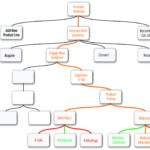I’m writing this blog in reaction to a post I recently read where web site speed was optimized which resulted in visitors staying longer and navigating deeper into the site. This was viewed as a success and that the effort was worth it. But the number of conversions, the conversion rate and revenue generated on the site didn’t change. Was spending lots of resources on speeding up the site worth it? The simple answer is “no”.
Tracking actionable KPIs is crucial for businesses aiming to drive growth, improve efficiency, and make data-driven decisions. But there are thousands of measures and metrics being captured in business. Some deliver value in decision-making while others are just noise. For a business to thrive, you need to figure out what to track and what to ignore.
Measure Actions, not Results
KPIs must measure specific activities that directly tie to an organization’s goals and objectives. And they need to be actionable; if the value changes, you know what to do differently and what action to take. That’s because the KPI is tracking a very specific action or activity. Unlike vanity metrics that may look impressive but offer little practical value, actionable KPIs provide clear insights into performance and guide decision-making processes.
All too often KPIs measure the effect of business activities but ignore the cause. Product sales, new customers and even revenue only inform how you did. But not why you did well or poorly. Certainly, it’s a good idea to keep track of revenue. And you have lots of systems to do that. But revenue is not a KPI. The best KPIs have target values that when missed, you know what to do differently. Revenue doesn’t fit that definition since there are lots of things that effect it. Revenue is instead a KRI (Key Results Indicator) “The Difference between KPIs and KRIs and Why It Matters” – it’s the result of many things.
You are much better off measuring the transactions or actions that directly impact and cause you to have good or poor performance. And track them as calculated metrics and over time to provide real insight.
Actionable KPIs
Well designed KPIs are driven by goals and offer actionable insight. But we are not measuring a revenue goal as a KPI. Instead, we want to track and measure the actions that influence the goal. KPIs should not be values which need to be interpreted. If revenue changes, you need to figure out why. That is complicated because there are many influences, such as number of sales reps, product lines, geographical coverage and so on. And there are marketing activities such as advertising channels, ad spend and conversion rates, and even product manufacturing and logistics can affect sales. There are lots of influences on sales. But by measuring the things we actually do and knowing if we are meeting set targets allows us to track the activities that drive sale revenues.
There are lots of numbers to track, but they aren’t all KPIs. At least not by our definition. We think a KPI should be an action or activity that is itself easy to measure. If it improves or worsens, you know exactly what to do. That’s true with “number of sales call per month”, but it’s not true for “Revenue”.
While often used, these are not effective KPIs because they don’t describe why your business is doing well or not:
- Sales revenue
- Number of customers
- Gross Profit Margin
- Top 10 lists; campaigns, products, customers, etc.
Those measures don’t inform you why you are performing the way you are. Effective KPIs look like this:
- Number of registrations as a ratio to number of visitors to our site (this tells us how well our conversion funnel is working)
- Rate Increase in web visitors from paid or organic search Month over Month (this tells us how well our campaigns are working to bring us new potential customers)
- Rates of Contact Us forms filled in Month over Month (this tells us how well our conversion efforts are working)
- Ratio of Registrations by Visitors Month over Month (this tells us how well our conversion efforts are working)
- Monthly sales calls vs set target (tells us if we are meeting this sales activity)
- Monthly new customer proposals vs set target (tells us if we are meeting this sales activity)
By tracking KPIs that are actionable, we can quickly identify which areas we need to focus on. If all these activity-based KPIs are being met, revenue will follow.
Aligning Goals with Metrics
One of the primary benefits of tracking actionable KPIs is the alignment and correlation it creates between organizational goals and day-to-day operations. When staff can see how their work directly contributes to the organizational or team goal, it boosts their morale, engagement, and job satisfaction, resulting in a more motivated and productive workforce.
Let’s return to our initial example of increasing web site performance. Improved speed encouraged users to dig deeper into the site and to consume more content. But conversions and conversion rates and product sales weren’t affected. If spending more time on the site and interacting with more content didn’t improve those metrics, perhaps users weren’t finding the right content. Or the call-to-action (CTA) was convoluted or confusing and didn’t trigger the user to convert. Or maybe the conversion rates were already so poor, that simply generating more activity didn’t really change things.
If revenue is the ultimate goal, then speeding up the site wasn’t worth the effort. Instead, they should consider what is affecting the conversion rates, the pages that are driving users to the site and the CTA as well as the quality of the web traffic.






